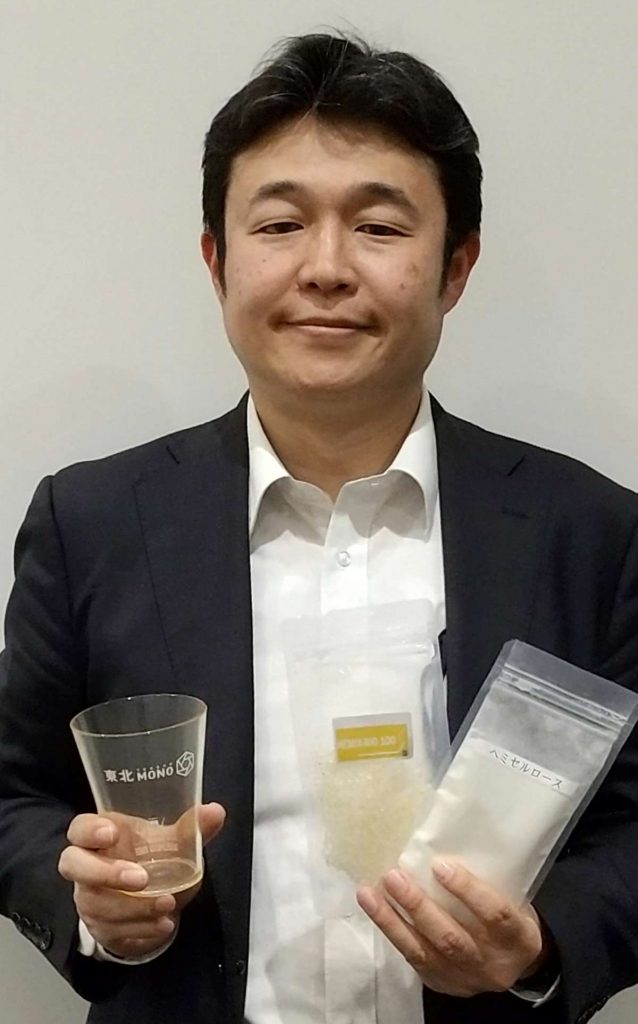
Tumblers and other products made from HEMIX bioplastic (Photo courtesy of Business Innovation Partners).
Read the full story on Japan 2 Earth - Bioplastic That Makes Better Use of Plant Waste Grows in Popularity
A startup has successfully developed a bioplastic by extracting components from underused biomass like wood waste that had been difficult to utilize to date.
The bioplastic has lower CO2 emissions compared to plastics derived from petroleum. It can also be made biodegradable and ultimately broken down into CO2 and water by microorganisms.
Several major companies have adopted the bioplastic for their products. Work is underway to develop new applications for the material.
Underused Component Becomes Bioplastic
The startup is Business Innovation Partners, based in Kawasaki. A consulting company, the startup supports the 'midstream' sector. This includes the die and mold industry which is essential for processing materials and the raw materials that are processed using dies.
The company started developing bioplastics based on the belief that it could support the industry by creating new materials upstream, that would be in demand midstream.
It chose to focus on 'hemicellulose' as a component. The startup embarked on the development of the new material when an experienced technician, who had researched hemicellulose for many years, joined the firm as a mid-career recruit.

Trees and other plants are comprised of 40-50% cellulose and 20-30% hemicellulose. Cellulose, the main component of pulp, is widely utilized. But hemicellulose, which is difficult to extract and process, has mostly been burned or discarded unused.
Business Innovation Partners found the optimum conditions for extracting hemicellulose by applying heat and pressure to plants and trees. The extracted hemicellulose is chemically treated with natural additives, forming a bioplastic.
The company sells the product under the name HEMIX. It can be manufactured to be transparent, heat resistant, and durable.
Continue reading the full story on Japan 2 Earth.
And find more great articles on the environment and the challenges of achieving the SDGs on our new website Japan 2 Earth (J2E), sparking a transition to the future.
RELATED:
- 500 Million Tons of Disappeared Plastic Waste: Flow into Oceans Is Just the Tip of the Iceberg
- Typhoon-Proof Wind Power Supports Access to Energy in Developing Countries
(Read the article in Japanese.)
Author: Shunichi Takahashi








